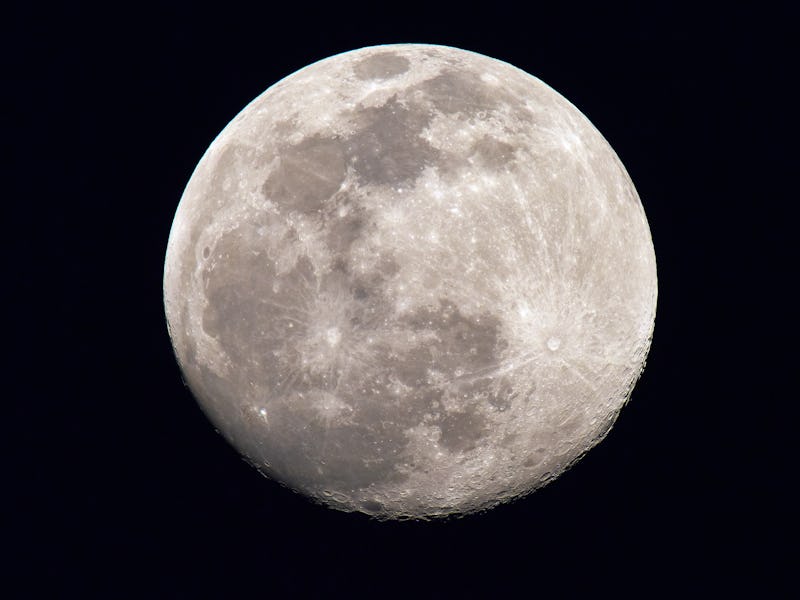Jupiter is Back! And 3 More Astronomical Events In May
See the first penumbral eclipse in over two years, plus more stunning sights.

Back in 2020, the world saw four penumbral lunar eclipses in a single year.
Since then, not one has graced the sky. To be fair, we’ve seen a few partial and total lunar eclipses in the meantime — but this month, the penumbral eclipse makes a grand return.
We’ll also get a glimpse at a famous meteor shower, a meetup of several stunning objects, and a chance to spot a planet that’s been missing since mid-April.
Here are four astronomical events you don’t want to miss in May:
May 5: Lunar eclipse
A penumbral lunar eclipse will dim the Moon ever-so-slightly at the beginning of May. Unlike the fanfare of a total or partial lunar eclipse, penumbral eclipses are so subtle that they can be easy to miss. The most recent one happened in November 2020.
Penumbral eclipses happen when the Moon passes through Earth’s faint outermost shadow, called the penumbra. If you’re viewing from Africa, Asia, or Australia, the dimming effect will be visible starting at 3:14 p.m. UTC, and will last for four hours and 17 minutes.
Europe, North America, and South America will be outside the eclipse’s range of visibility.
This diagram shows the Moon moving through Earth’s shadows. During a penumbral lunar eclipse, the full Moon only passes through Earth’s fainter, outermost shadow, called the penumbra.
Lunar eclipses always coincide with the full Moon. If the eclipse isn’t visible in your area, you’ll just see the normal full Moon glowing in the sky.
The next lunar eclipse — a partial eclipse — will happen later this year on October 28 and will be visible from every continent, minus a vast swath of North and South America.
May 5-6: eta Aquariids peak
Two spectacular meteor showers kick off in April each year: the Lyrids and the eta Aquariids. The Lyrids appear stronger in the Northern Hemisphere, while the eta Aquariids shine brightest in the Southern Hemisphere, though you can technically see both from anywhere in the world.
On the evenings of May 5 and 6, the eta Aquariids will hit their peak, showcasing a maximum of 50 meteors per hour in the best viewing conditions, according to the American Meteor Society. However, from the equator northward, the shower typically produces 10 to 30 visible meteors per hour.
Meteors streak across the sky during the Lyrid meteor shower in April 2020.
To spot the shower, look for the constellation Aquarius in the sky a few hours before dawn. Meteors will appear to radiate from a point near the star eta Aquarii.
The bright, full Moon will rise on the first night of the shower’s peak and can make it more difficult to spot meteors since the sky will be flooded with light. Thankfully, the eta Aquariids will be visible until May 27, though lower meteor rates are likely.
May 15: Jupiter reappears
You may have noticed that Jupiter went missing from the sky over the past few weeks. On April 11, the gas giant entered solar conjunction, meaning that the planet was obscured from view as it traversed the far side of the Sun.
This animation shows where Mars and Earth are placed around the Sun during a solar conjunction.
Since then, Jupiter has slipped past the fiery star and is creeping back into our early morning sky. By May 15, you should be able to get a clear view of the planet just before sunrise.
A few days later, on May 17, the waning crescent Moon will appear to pass in front of Jupiter — an event called an occultation. However, it may be difficult to spot depending on your location, especially if the Sun rises before the occultation takes place.
May 24: Moon meets several bright objects
Feast your eyes on a cluster of bright objects in the May 24 evening sky. That night, Mars and the Moon will make a close approach.
Nearby, you’ll be able to see the Beehive Cluster, according to EarthSky. This famous smattering of celestial objects is just 600 light years away from Earth and appears near the bright star Pollux and the star system Castor, which make up the constellation Gemini.
You won’t have to look far to see Venus, either. It’s easy to spot the planet — and so is the Moon and Mars. Whichever object catches your eye first will lead you to the rest.
This article was originally published on